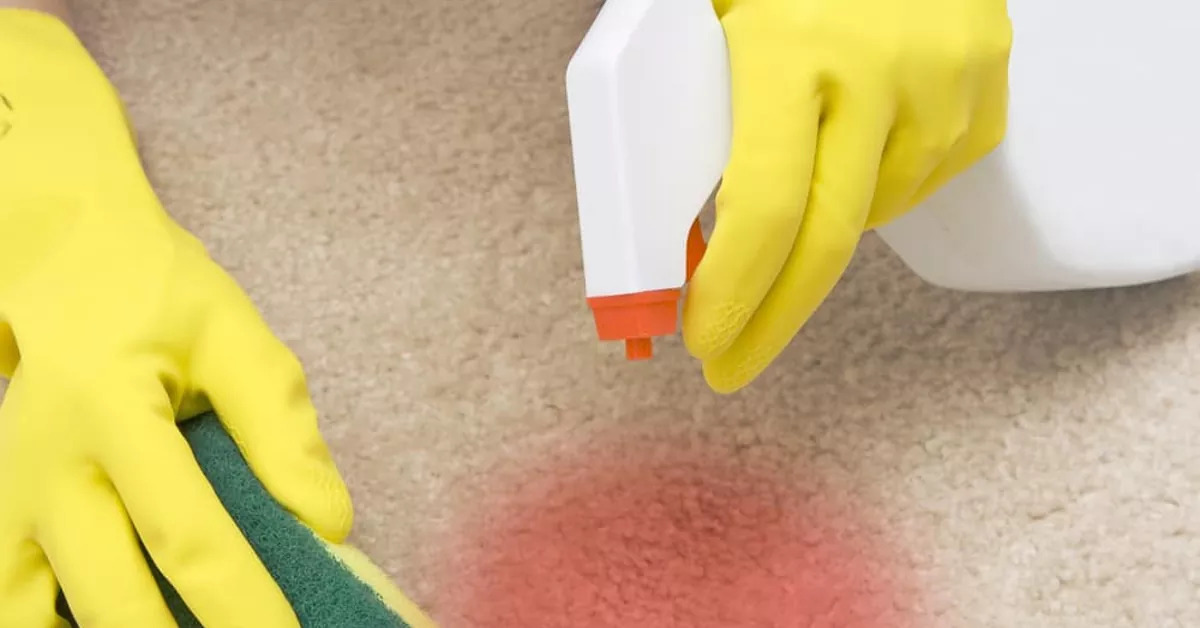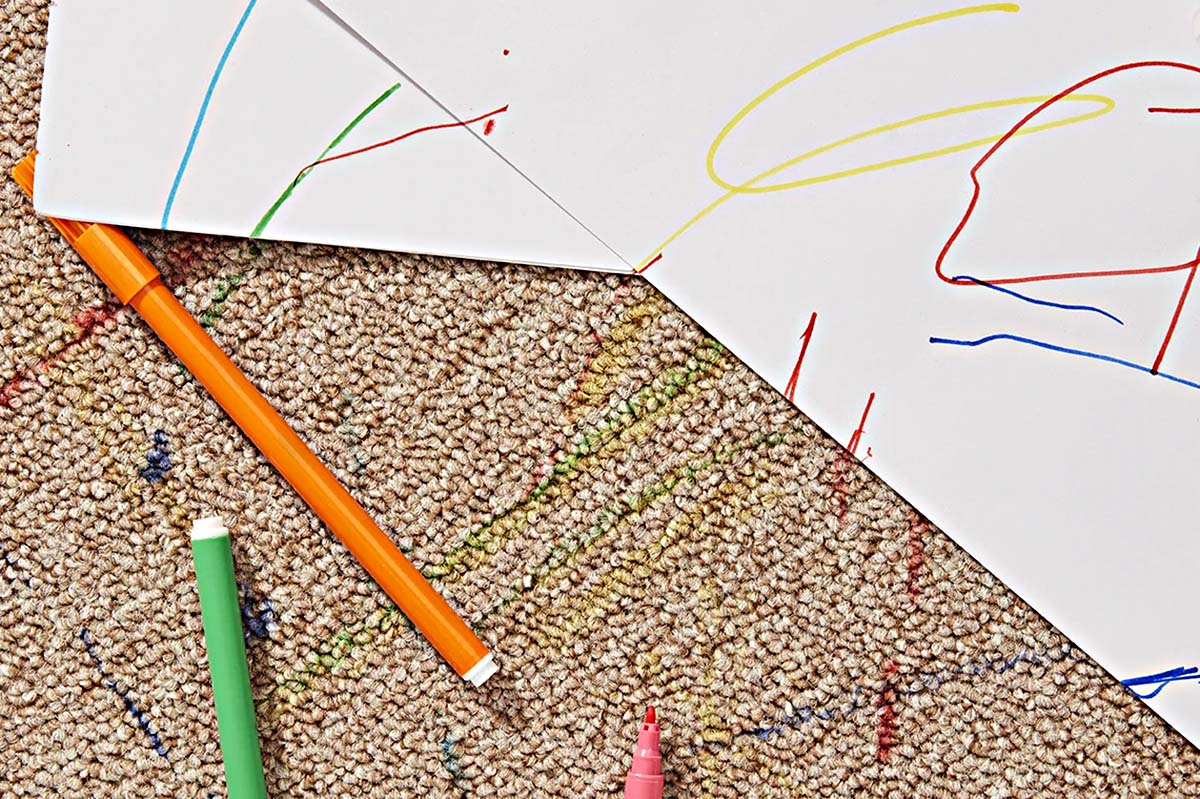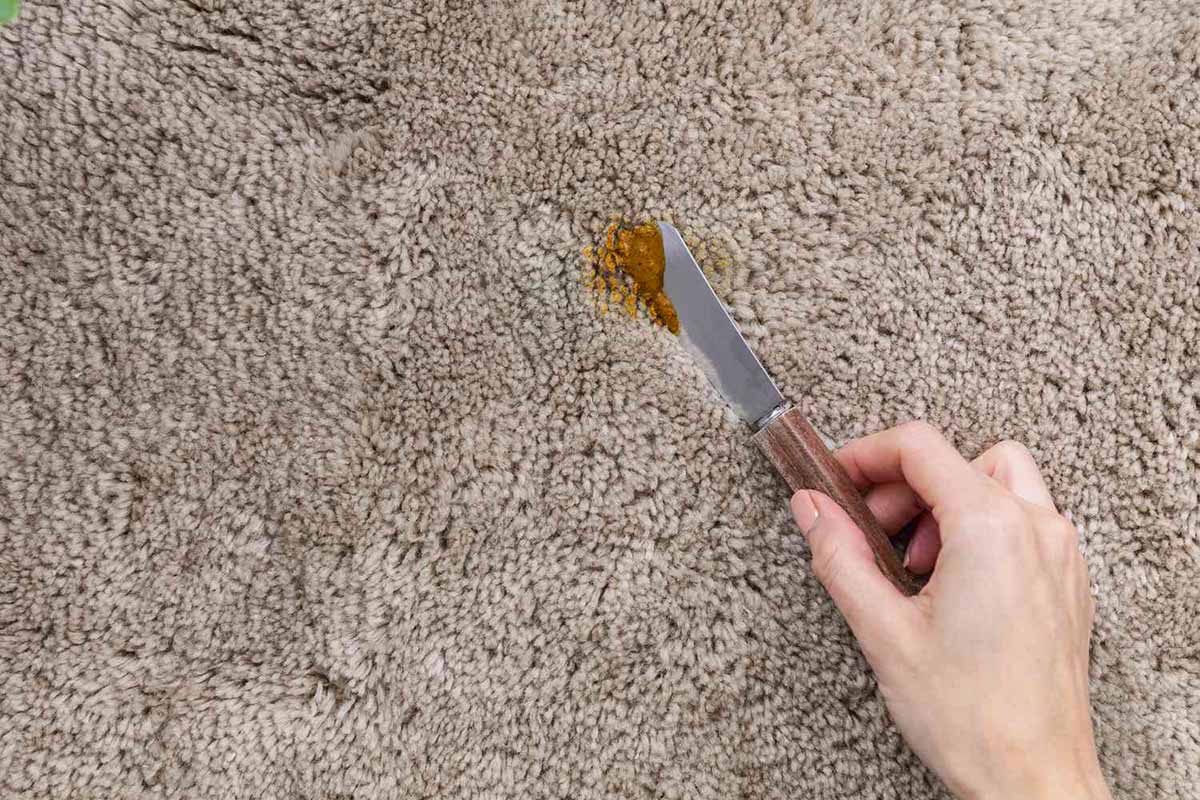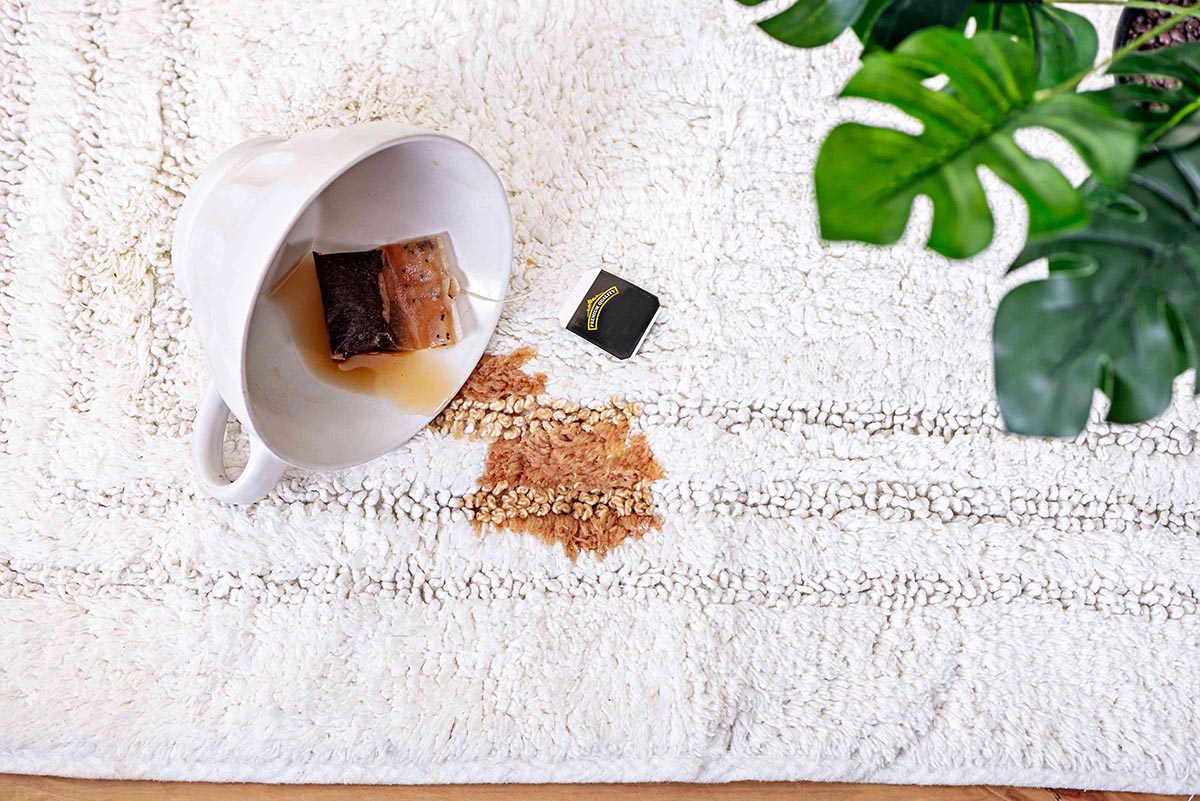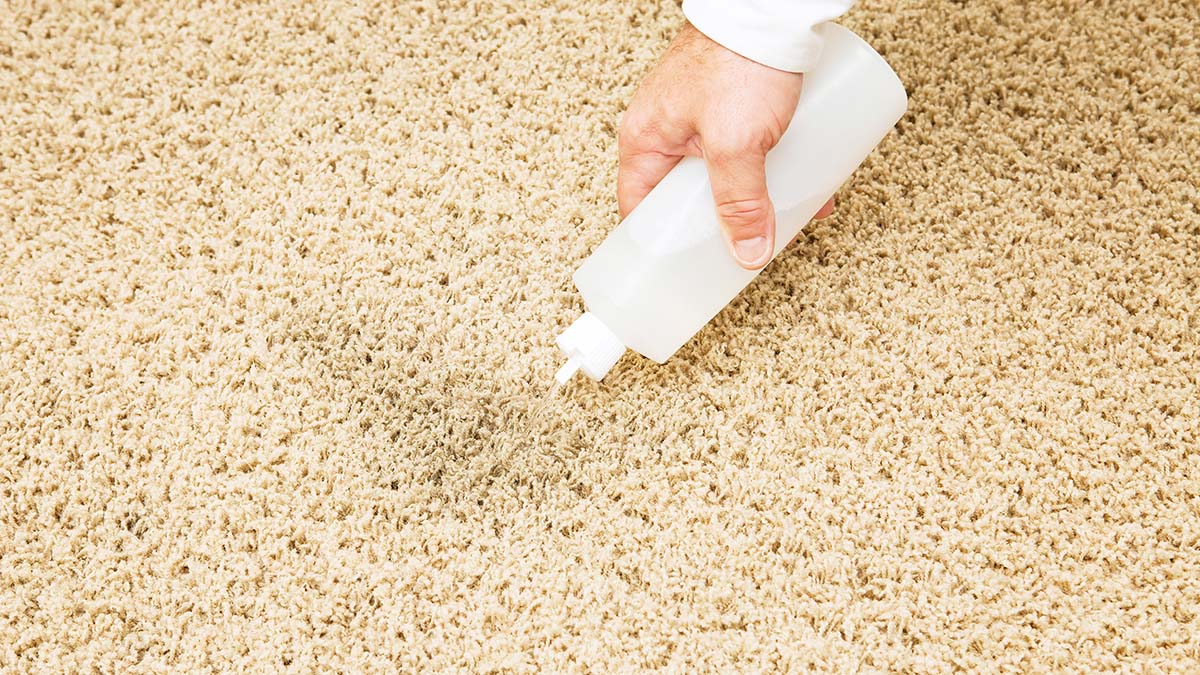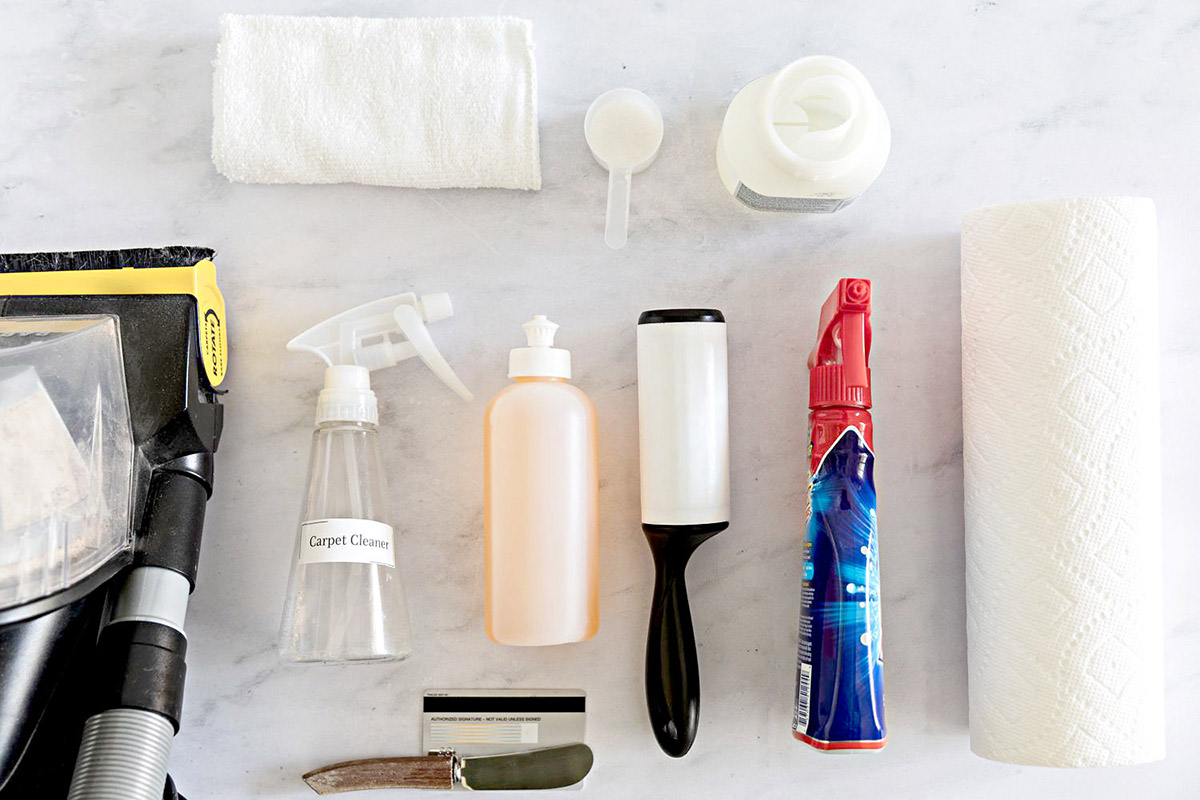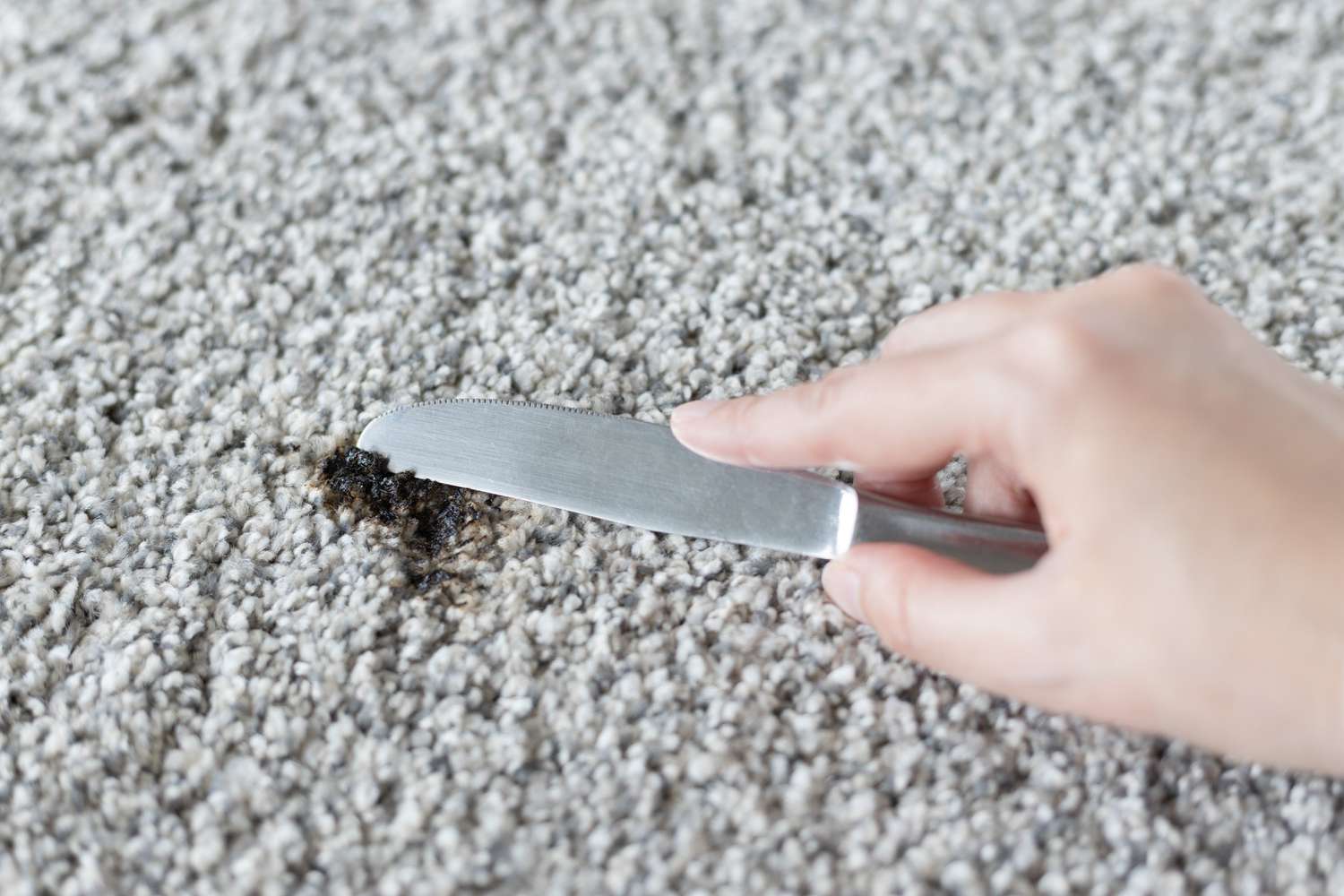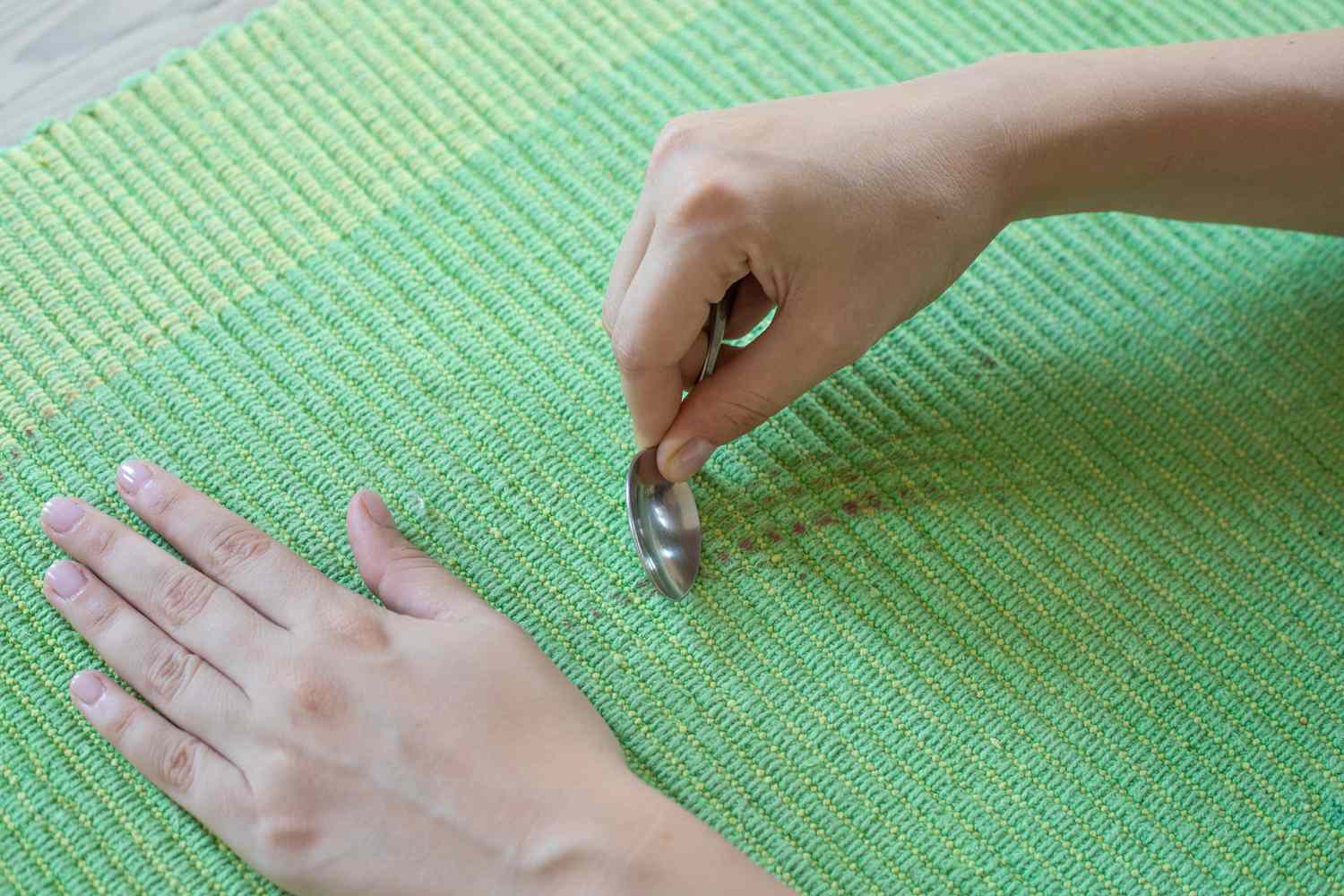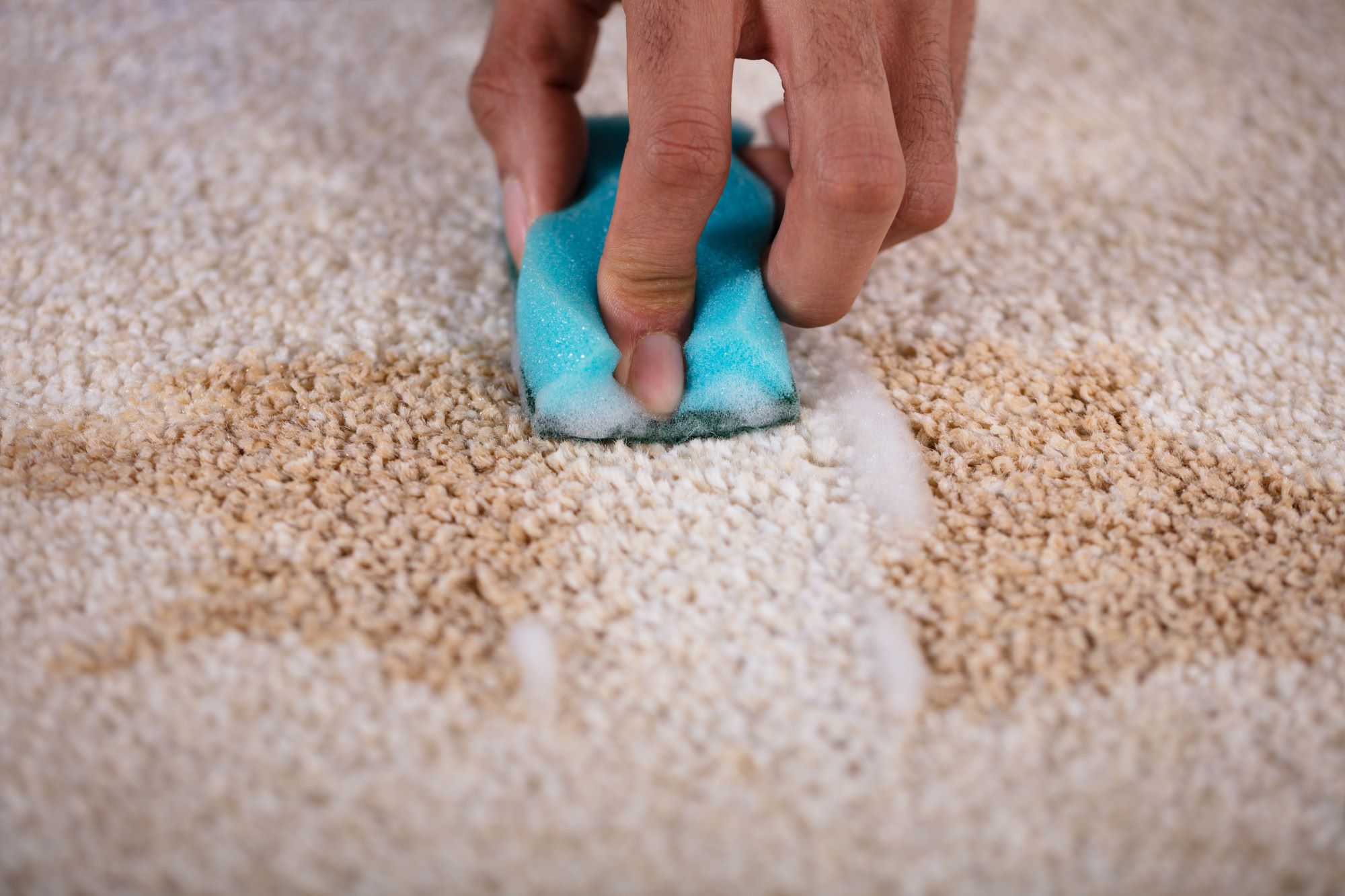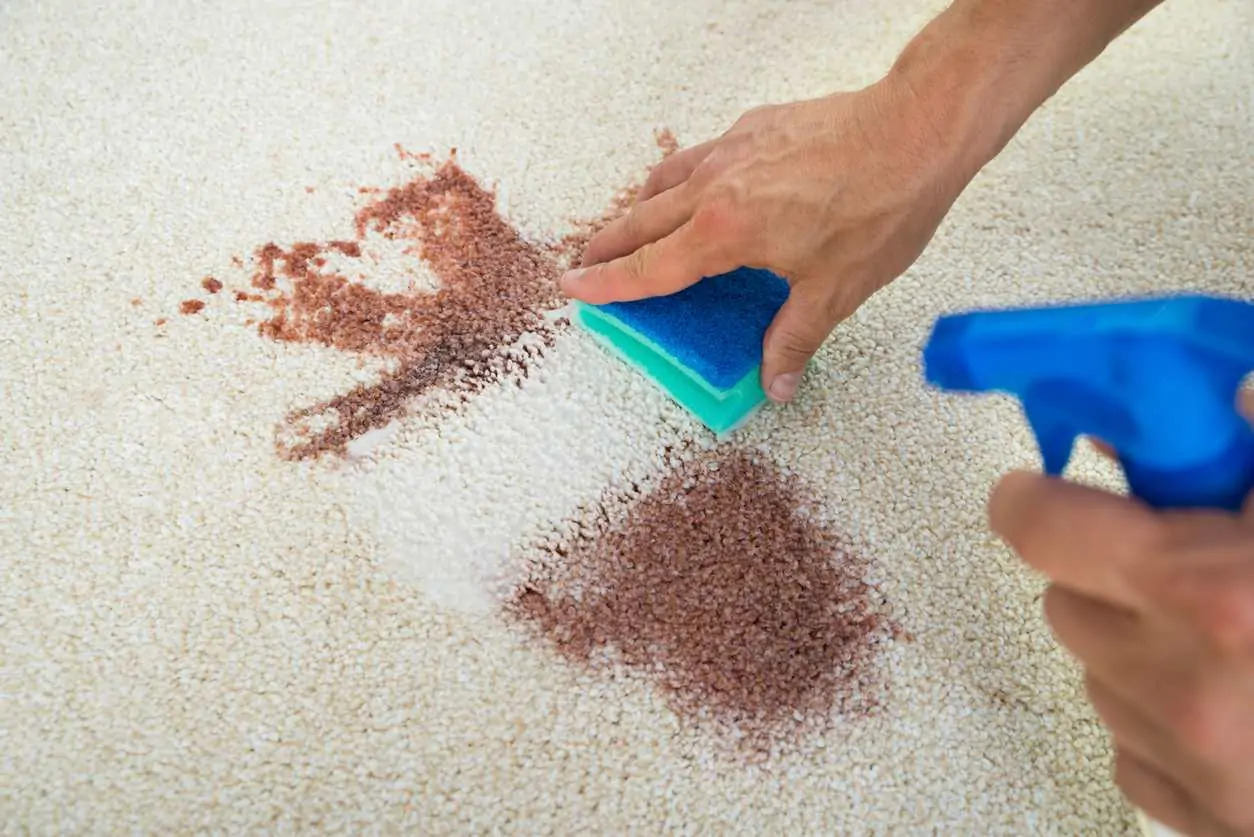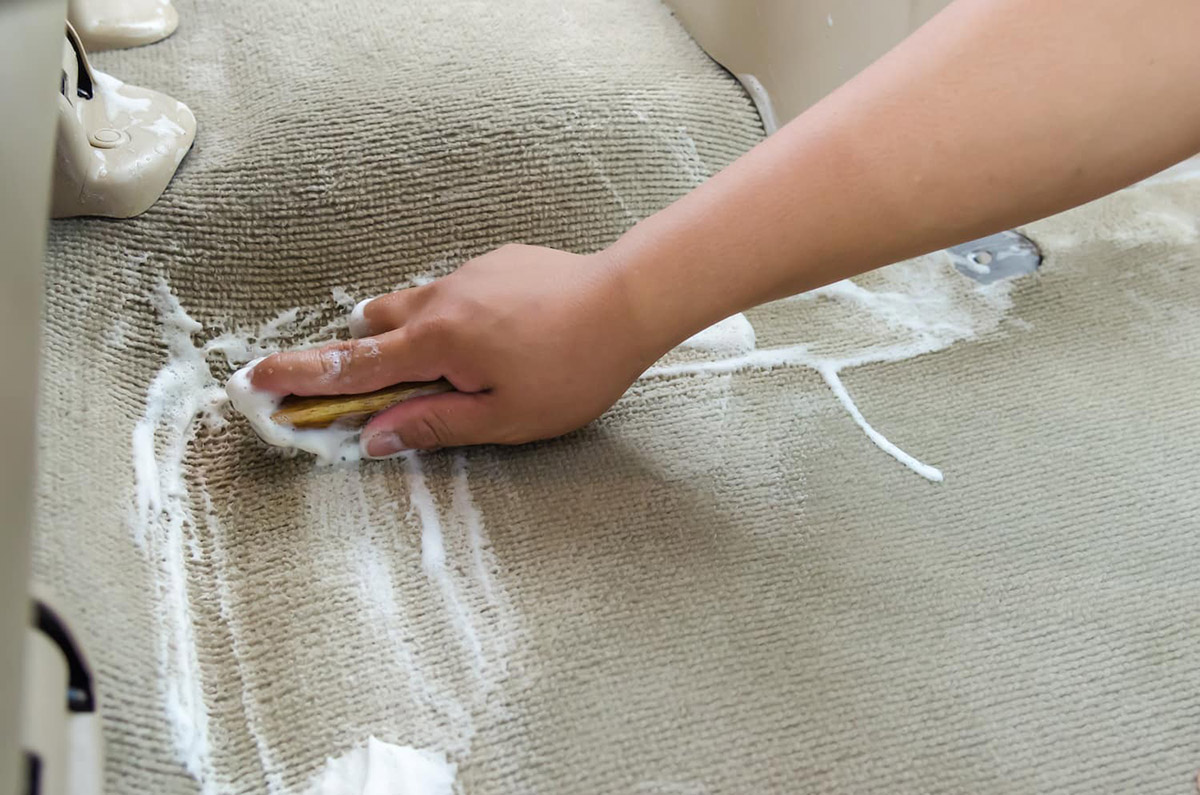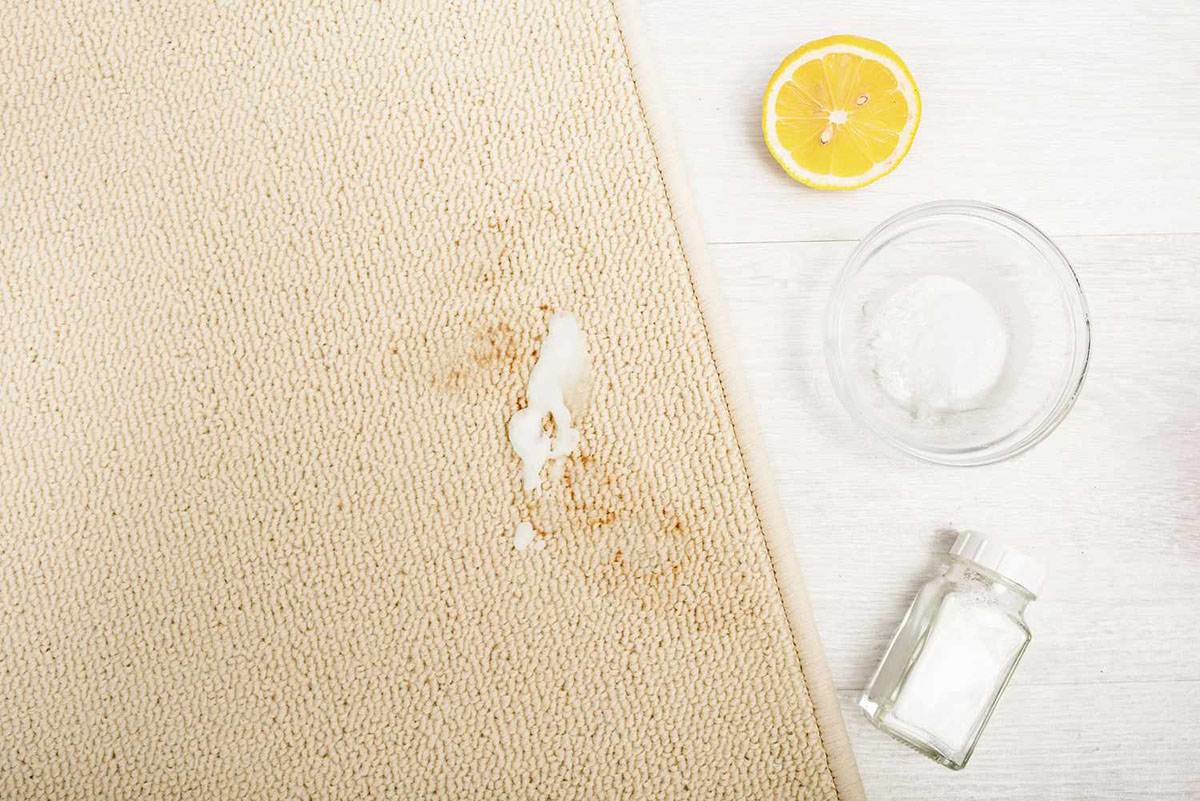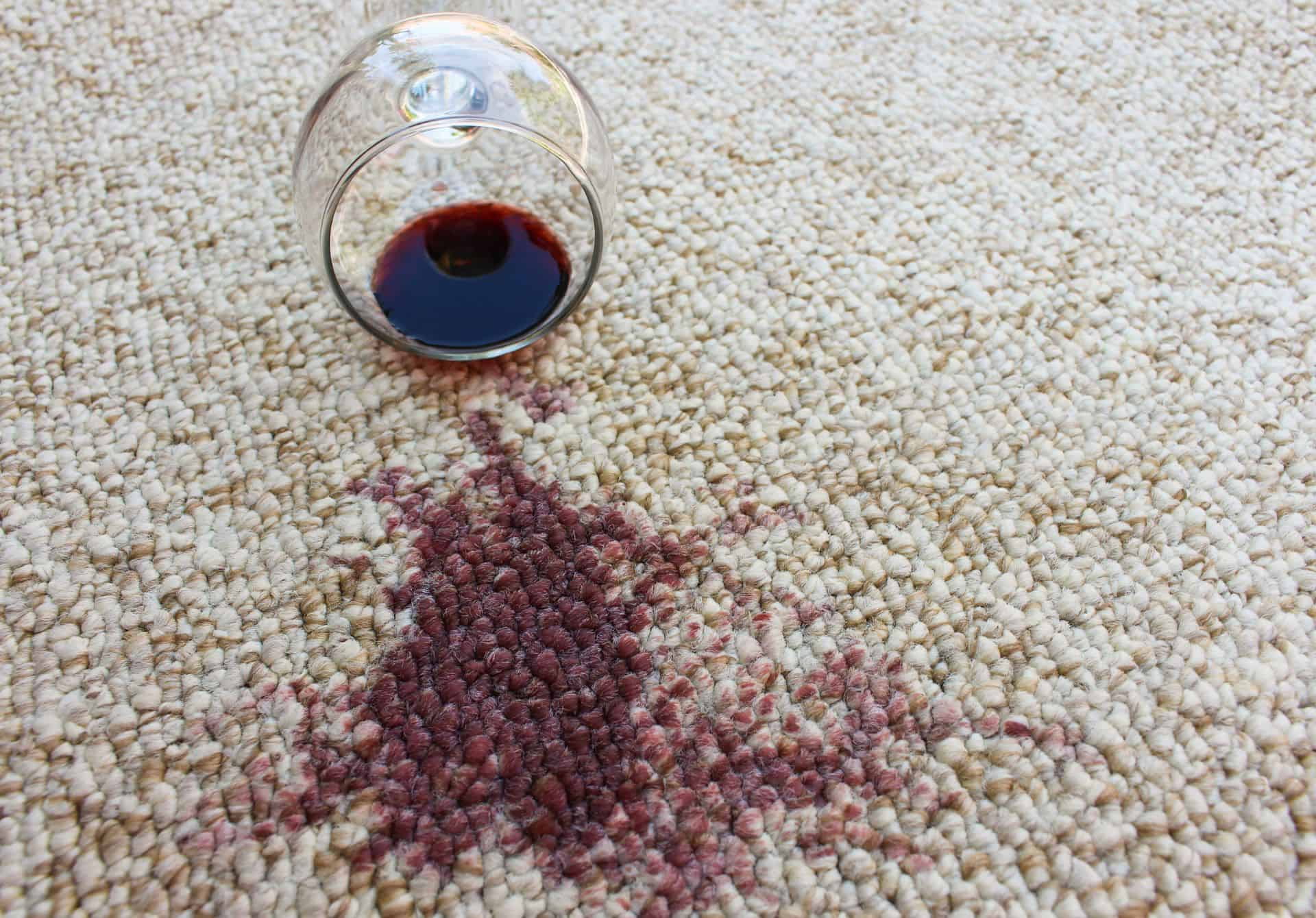

Articles
How To Remove Stains From Wool Carpet
Modified: January 9, 2024
Learn effective techniques and solutions to remove stubborn stains from your wool carpet with our informative articles. Say goodbye to unsightly marks and restore the beauty of your carpet.
(Many of the links in this article redirect to a specific reviewed product. Your purchase of these products through affiliate links helps to generate commission for Storables.com, at no extra cost. Learn more)
Introduction
Having a wool carpet adds a touch of elegance and warmth to any room. However, dealing with stains on a wool carpet can be a daunting task. Wool is a natural fiber that is sensitive to harsh chemicals and aggressive cleaning methods, making it important to approach stain removal with care.
In this article, we will explore the best practices for removing stains from a wool carpet. Whether it’s a spilled glass of red wine, pet accidents, or muddy footprints, we’ve got you covered. With the right techniques and a little bit of patience, you can restore your wool carpet to its pristine condition.
Before we dive into the methods for removing stains, it’s important to understand the nature of wool carpet stains. Wool fibers have scaled surfaces that can absorb liquids quickly, making it crucial to act fast when a spill occurs. Additionally, wool is prone to discoloration and damage if exposed to excessive moisture or harsh chemicals.
When it comes to cleaning your wool carpet, it’s essential to take a few precautions. Firstly, always test any cleaning solution on a small, inconspicuous area of the carpet to ensure that it does not cause discoloration or damage. Secondly, avoid using excessive amounts of water or soaking the carpet, as this can lead to mold and mildew growth. Lastly, gently blot the stain instead of rubbing it vigorously, as rubbing can push the stain deeper into the carpet fibers.
Now that we understand the importance of caution and proper techniques, let’s explore the common methods for removing stains from wool carpet. Each method has its own unique approach, so you can choose the one that suits your needs and the type of stain you’re dealing with.
Key Takeaways:
- Act quickly and use gentle blotting techniques to remove stains from wool carpets. Avoid excessive moisture and harsh chemicals to preserve the delicate fibers and maintain the carpet’s pristine condition.
- Utilize natural solutions like vinegar and baking soda paste, along with commercial stain removers, to effectively tackle different types of stains on wool carpets. Always prioritize caution and test cleaning solutions before use.
Read more: How To Remove Rust Stains From Carpet
Understanding Wool Carpet Stains
Before we delve into the various methods for removing stains from wool carpets, it’s important to understand the different types of stains that can occur and how they can affect your carpet.
Wool carpet stains can be classified into three main categories:
- Water-based stains: These stains include spills from beverages such as coffee, tea, juice, or even plain water. They can also include liquid stains from items like sauces or soups.
- Oil-based stains: These stains result from substances like cooking oils, grease, lotion, or makeup. They are generally more difficult to remove as wool is an absorbent material.
- Protein-based stains: These stains are caused by substances like blood, urine, vomit, or food particles that contain proteins. If not cleaned properly, they can leave lingering odors and bacteria.
It’s important to identify the type of stain you are dealing with before attempting to remove it. This will help you choose the most appropriate cleaning method and avoid causing further damage to your carpet.
Additionally, the longer a stain remains on your wool carpet, the more difficult it can be to remove. Therefore, swift action is essential. As soon as you notice a stain, immediately grab some clean paper towels or a white cloth to blot up as much of the spill as possible. Remember to avoid rubbing the stain vigorously, as this can push it deeper into the carpet fibers.
Another factor to consider when dealing with wool carpet stains is the colorfastness of the carpet. Some wool carpets are more prone to color fading or bleeding than others. To determine if your carpet is colorfast, you can perform a simple test by moistening a white cloth with water and gently rubbing it on an inconspicuous area of the carpet. Check if any color transfers onto the cloth. If there is no color transfer, then your carpet is likely colorfast.
By understanding the nature of wool carpet stains and taking the necessary precautions, you can effectively tackle the various types of stains while preserving the condition and appearance of your beautiful wool carpet.
Precautions Before Cleaning
Before diving into the stain removal process, there are a few precautions you should take to protect your wool carpet and ensure effective results.
1. Read the manufacturer’s guidelines: Different wool carpets may have specific cleaning instructions provided by the manufacturer. It’s important to consult these guidelines before attempting any stain removal methods to avoid damaging the carpet or voiding any warranties.
2. Test the cleaning solution: Before using any cleaning solution on your wool carpet, it’s crucial to test it on a small, inconspicuous area first. Apply a small amount of the solution to the area and blot it with a clean cloth. Check for any adverse effects such as color fading or fiber damage. If there are no negative reactions, you can proceed with confidence.
3. Remove debris: Before applying any stain removal techniques, make sure to remove any loose debris or dirt from the stained area. You can use a vacuum cleaner or a soft brush to gently loosen and remove the particles without rubbing them further into the carpet fibers.
4. Avoid excessive moisture: While it may be tempting to pour water or cleaning solution directly onto the stain, it’s important to remember that wool is sensitive to excessive moisture. Instead, aim to use minimal liquid and avoid soaking the carpet. Excessive moisture can lead to mold and mildew growth, which can further damage your carpet.
5. Blot instead of rubbing: When it comes to removing stains from wool carpet, never rub the stain vigorously. Rubbing can spread the stain and push it deeper into the carpet fibers, making it more challenging to remove. Instead, gently blot the stain using a clean, white cloth or paper towels. Apply light pressure to absorb the stain without spreading it further.
6. Work from the outside in: When treating a stain, always start from the outer edges and work your way towards the center. This prevents the stain from spreading to unaffected areas of the carpet. Keep blotting and applying the cleaning solution incrementally until the stain is completely removed.
By following these precautions, you can effectively protect your wool carpet while effectively removing stains. Remember, patience and gentle techniques are key to maintaining the beauty and longevity of your wool carpet.
Common Methods for Removing Stains from Wool Carpet
When it comes to removing stains from wool carpet, there are several effective methods to choose from. Each method targets different types of stains and employs specific techniques to ensure successful stain removal. Let’s explore some of the most common methods.
1. Blotting the Stain
The first and most important step in stain removal is blotting the stain as soon as possible after a spill occurs. Use a clean, white cloth or paper towels to gently blot the stain. Avoid rubbing the stain, as it can push it deeper into the carpet fibers and make it harder to remove. Blotting allows you to soak up as much of the liquid as possible, minimizing its absorption into the wool fibers.
Read more: How To Remove Berry Stains From Carpet
2. Using Dish Soap Solution
For water-based stains, such as coffee, juice, or wine, a dish soap solution can work wonders. Mix a few drops of mild dish soap with warm water and apply it to the stain. Gently blot the stain with a clean cloth soaked in the solution. Rinse the area with clean water and blot again to remove any soap residue. Repeat the process until the stain disappears. Remember to avoid excessive moisture and perform a colorfastness test beforehand.
3. Applying Vinegar and Water Solution
Vinegar can be a valuable ally in removing stubborn stains from wool carpet. Mix a solution of equal parts white vinegar and water. Apply the solution to the stained area and let it sit for a few minutes. Blot the stain using a clean cloth. Vinegar helps break down and remove the stain while also neutralizing any unpleasant odors. If needed, rinse the area with clean water to remove any residual vinegar smell.
4. Utilizing Baking Soda Paste
Baking soda is a natural cleaning agent that can effectively tackle tough stains on wool carpet. Create a paste by mixing baking soda with a small amount of water. Apply the paste directly to the stain and let it sit for a few hours or overnight. Once the paste has dried, vacuum it up, and gently blot the area with a clean cloth. Baking soda helps absorb and lift the stain from the carpet fibers, leaving your wool carpet refreshed and stain-free.
5. Using Commercial Carpet Stain Removers
If the above methods fail to remove the stain, you may consider using a commercial carpet stain remover specifically designed for use on wool carpets. Ensure the product is safe for use on wool and follow the instructions provided. Apply the stain remover to the affected area, following the manufacturer’s recommended technique. Always blot, rather than rub, and rinse the area with clean water afterward to remove any residue.
Remember, regardless of the stain removal method you choose, always prioritize caution and test the cleaning solution on a small, inconspicuous area first. Additionally, follow the proper technique of gentle blotting and minimal moisture to prevent any potential damage to your wool carpet.
With these common stain removal methods in your arsenal, you can confidently tackle various stains and keep your wool carpet looking clean and beautiful.
Read more: How To Remove Ink Stains From Carpet
Blotting the Stain
Blotting the stain is the initial and crucial step in removing stains from a wool carpet. By acting quickly and blotting the stain as soon as it occurs, you can prevent it from seeping deeper into the carpet fibers and becoming more difficult to remove.
Here’s a step-by-step guide on how to effectively blot a stain:
- Gather your supplies: Before you begin, make sure to have clean, white cloths or paper towels on hand. Avoid using colored towels or those with patterns, as they may transfer dye onto the carpet.
- Start blotting: As soon as a spill occurs, quickly grab a cloth or paper towel and gently blot the stain. Place the cloth over the stain and apply light pressure. Be careful not to scrub or rub the stain, as it can spread and push it deeper into the carpet fibers.
- Work from the outside in: Begin blotting the stain from the outer edges towards the center. This helps prevent the stain from spreading to unaffected areas of the carpet.
- Switch to a clean area: As you blot, the cloth or paper towel will absorb the stain. Once an area of the cloth becomes saturated, switch to a clean portion to avoid transferring the stain back onto the carpet.
- Repeat as necessary: Continue blotting the stain until no more liquid is being absorbed by the cloth. If the stain is persistent, repeat the process with a fresh cloth and check the progress.
It’s important to note that blotting is most effective when done immediately after a spill occurs. The longer a stain remains untreated, the harder it becomes to remove. So, be prompt in addressing any spills or stains on your wool carpet.
Remember to exercise caution when blotting to protect the integrity of the wool fibers. Avoid using excessive force or rubbing vigorously, as this can damage the carpet. Instead, use gentle and light pressure to lift the stain.
Once you have successfully blotted the stain and most of the liquid has been absorbed, you can proceed with further stain removal methods if necessary.
Blotting the stain is a simple yet effective technique that should be your first line of defense against stains on your wool carpet. By acting quickly and using proper blotting techniques, you can minimize the impact of the stain and improve your chances of complete removal.
Using Dish Soap Solution
When faced with water-based stains on your wool carpet, such as coffee, juice, or wine spills, using a dish soap solution can be an effective method of stain removal. Dish soap is mild enough to avoid damaging the wool fibers while still providing the cleaning power needed to tackle the stain.
Follow these steps to effectively remove water-based stains using a dish soap solution:
- Create the solution: In a small bowl or bucket, mix a few drops of mild dish soap with warm water. Be sure to use a dish soap that does not contain bleach or any harsh chemicals that could potentially damage the wool fibers.
- Blot the stain: Before applying the dish soap solution, gently blot the stain with a clean, white cloth or paper towel to remove any excess liquid. This helps prevent the stain from spreading further into the carpet fibers.
- Apply the solution: Dip a clean cloth or sponge into the dish soap solution and gently dab it onto the stain. Avoid saturating the carpet with the solution, as excessive moisture can damage the wool. Work from the outside of the stain towards the center, gradually applying the solution and blotting the stain.
- Gently blot the stain: Using a clean cloth or paper towel, blot the stained area in a gentle, dabbing motion. This helps to lift the stain from the carpet fibers without rubbing it in further. Continue blotting until you see the stain transferring from the carpet to the cloth.
- Rinse with clean water: Once you have successfully removed the stain, dampen a clean cloth with clean water and blot the area to remove any soap residue. This step is important to prevent any sticky residues that could attract dirt or cause discoloration.
- Allow to dry: Leave the carpet to air dry completely before walking on it. Avoid stepping on the damp area as it may cause the stain to reappear or the fibers to become distorted.
Remember to perform a colorfastness test in an inconspicuous area before applying the dish soap solution to the stained area. This will ensure that the solution does not cause any color fading or damage to your wool carpet.
The dish soap solution method is particularly effective for water-based stains on wool carpet. By using a gentle cleanser and properly blotting the stain, you can effectively remove the stain without compromising the integrity of the wool fibers.
Applying Vinegar and Water Solution
When dealing with tough stains on your wool carpet, a solution combining vinegar and water can be highly effective. Vinegar acts as a natural cleaner and deodorizer, making it a powerful tool for stain removal. This method is particularly useful for addressing stubborn stains and removing any unpleasant odors.
Follow these steps to remove stains using a vinegar and water solution:
- Prepare the solution: In a spray bottle or bowl, mix equal parts white vinegar and water. It’s important to use white vinegar as it is less likely to leave behind any unwanted color or residue on your wool carpet.
- Blot the stain: Before applying the solution, gently blot the stained area with a clean, white cloth or paper towel to remove as much liquid or residue as possible. This helps prevent the stain from spreading further into the carpet fibers.
- Apply the vinegar solution: Spray or dab the vinegar and water solution onto the stained area. Be careful not to saturate the carpet, as excessive moisture can damage wool fibers. Work from the outer edge of the stain toward the center, gradually applying the solution and blotting the stain.
- Gently blot the stain: Using a clean cloth or paper towel, gently blot the stained area in a dabbing motion. This helps to lift the stain from the carpet fibers without rubbing it in further. Continue blotting until you see the stain transferring from the carpet to the cloth.
- Rinse with clean water: Once the stain is removed, dampen a clean cloth with fresh water and blot the area to remove any remaining vinegar solution. This step is important to prevent any sticky residue that could attract dirt or cause discoloration.
- Dry the carpet: Allow the area to air dry completely. Avoid walking on the damp carpet until it is fully dry as this may cause the stain to reappear or the fibers to become distorted.
Always conduct a colorfastness test on an inconspicuous area of the carpet before applying the vinegar and water solution. This will ensure that the solution does not cause any color fading or damage.
The vinegar and water solution method is effective in removing stains from a wool carpet while also neutralizing any odors. The natural cleaning properties of vinegar make it a safe and eco-friendly option for stain removal.
Remember, persistent or larger stains may require multiple applications of the vinegar and water solution. Be patient and persistent in your efforts to ensure the best possible results.
Utilizing Baking Soda Paste
If you’re dealing with a stubborn stain on your wool carpet, utilizing a baking soda paste can be an effective solution. Baking soda is a natural cleaning agent that can help lift and absorb stains from the carpet fibers. This method is especially useful for removing odors and lightening deep-set stains.
Follow these steps to remove stains using a baking soda paste:
- Create the paste: In a small bowl, mix baking soda with a small amount of water to create a thick paste. The consistency should be similar to toothpaste.
- Apply the paste to the stain: Using a clean cloth or your fingertips, apply the baking soda paste directly onto the stained area. Gently rub the paste into the stain, making sure to cover it completely.
- Let it sit: Allow the baking soda paste to sit on the stain for several hours or overnight. This gives the baking soda enough time to penetrate the carpet fibers and break down the stain.
- Vacuum the area: After the baking soda has had time to work its magic, use a vacuum cleaner with a brush attachment to remove the dried paste. Vacuum the area thoroughly, making sure to remove all traces of the baking soda.
- Blot the area: If any baking soda residue remains on the carpet, dampen a clean cloth with water and gently blot the area to remove it. Ensure that you don’t saturate the carpet with water, as excessive moisture can damage wool fibers.
- Allow to dry: Leave the carpet to air dry completely. Avoid walking on the damp area until it is fully dry to prevent any reshaping or distortion of the carpet fibers.
Baking soda is a mild and natural cleaning agent that is safe to use on wool carpets. It not only helps to remove stains but also absorbs any lingering odors, leaving your carpet refreshed.
It’s always a good idea to perform a colorfastness test on an inconspicuous area of the carpet before applying the baking soda paste to ensure that it does not cause any color fading or damage.
The baking soda paste method is a cost-effective and environmentally friendly way to tackle deep-set stains on your wool carpet. By allowing the baking soda paste to work its magic, you can effectively lift and lighten the stain, restoring the carpet’s appearance.
Blot the stain with a clean cloth to absorb as much liquid as possible. Mix a solution of mild detergent and water, then gently dab the stain. Avoid using harsh chemicals or scrubbing, as this can damage the wool fibers.
Read more: How To Remove Salt Stains From Carpet
Using Commercial Carpet Stain Removers
When faced with stubborn or difficult-to-remove stains on your wool carpet, using a commercial carpet stain remover can be a convenient and effective option. These stain removers are specifically formulated to target and lift stubborn stains without causing damage to the wool fibers.
Here are the steps to follow when using a commercial carpet stain remover:
- Choose a suitable stain remover: Look for a commercial carpet stain remover that is safe for use on wool carpets. Read the product label and ensure that it does not contain any harsh chemicals that could potentially damage the carpet.
- Blot the stained area: Before applying the stain remover, gently blot the stained area with a clean, white cloth or paper towel to remove any excess liquid or residue. This helps prevent the stain from spreading further into the carpet fibers.
- Follow the instructions: Read and follow the instructions provided by the stain remover manufacturer carefully. Different products may have specific application techniques and recommended waiting times.
- Apply the stain remover: Apply the commercial stain remover to the stained area according to the instructions. Be careful not to oversaturate the carpet, as excessive moisture can damage the wool fibers. Use a clean cloth or sponge to gently work the stain remover into the carpet fibers.
- Blot the area: After applying the stain remover, gently blot the area using a clean cloth or paper towel. This helps lift the stain and remove any excess stain remover from the carpet surface.
- Rinse with clean water (if necessary): Some stain removers may require rinsing with clean water after the application. If instructed, dampen a clean cloth with water and blot the area to remove any residual stain remover.
- Allow to dry: Leave the carpet to air dry completely. Avoid walking on the damp area until it is fully dry to prevent any reshaping or distortion of the carpet fibers.
Always perform a spot test in an inconspicuous area before using the commercial carpet stain remover on the stained area. This will help ensure that the product does not cause any color fading or damage to your wool carpet.
Commercial carpet stain removers offer convenience and targeted stain-fighting power. They can be particularly useful for tackling tough stains that may be resistant to other cleaning methods.
Remember to choose a stain remover specifically designed for use on wool carpets and always follow the manufacturer’s instructions for best results.
Additional Tips for Stain Removal
When it comes to removing stains from a wool carpet, there are some additional tips and tricks that can help improve your chances of successful stain removal. These tips can be used in conjunction with the methods mentioned earlier to ensure the best results:
- Act quickly: As soon as a spill occurs, try to address it promptly. The longer a stain sits on the carpet, the more difficult it can be to remove. Swift action can prevent the stain from setting and becoming more stubborn.
- Use cold water: When rinsing or blotting stains, it’s generally recommended to use cold water rather than hot water. Hot water can cause the stain to set or spread further on the carpet. Cold water helps to minimize the risk of color bleeding and can be effective in lifting the stain.
- Use a clean cloth: Always ensure that the cloth or cloth you use for blotting or applying cleaning solutions is clean. Avoid using colored or patterned cloths, as they may transfer dyes onto the carpet. Using a white cloth allows you to see if the stain is lifting from the carpet fibers.
- Avoid rubbing: While it may be tempting to rub vigorously at a stain, this can actually make it worse. Rubbing can push the stain deeper into the carpet fibers and spread it to a larger area. Instead, stick to gentle blotting and dabbing motions to lift the stain without causing further damage.
- Test any cleaning solution: Before applying any cleaning solution to the stained area, perform a spot test in an inconspicuous area of the carpet. This will help ensure that the solution does not cause any discoloration or damage. Wait for a few minutes, then check for any negative reactions before proceeding.
- Patience is key: Some stains may require multiple attempts and patience to remove completely. Don’t get discouraged if the stain doesn’t disappear after one treatment. Repeat the process, allow the solution to work, and continue blotting until the stain is lifted.
- Seek professional help if needed: If you’re dealing with a particularly stubborn or large stain that you’re unable to remove with DIY methods, it may be wise to seek professional carpet cleaning services. Professional cleaners have the knowledge and specialized equipment to effectively treat and remove tough stains from wool carpets.
By incorporating these additional tips into your stain removal efforts, you can increase your chances of successfully eliminating stains from your wool carpet. Remember to always proceed with caution and take the necessary steps to protect your carpet from damage during the cleaning process.
Conclusion
Removing stains from a wool carpet may seem like a daunting task, but with the right techniques and methods, you can effectively tackle even the toughest stains. Wool carpets are known for their beauty and durability, and by following the proper stain removal procedures, you can ensure that your carpet maintains its pristine condition.
Throughout this article, we have explored several common methods for removing stains from wool carpets. Whether you’re blotting the stain, using a dish soap solution, applying a vinegar and water solution, utilizing a baking soda paste, or utilizing a commercial carpet stain remover, each method has its own advantages and can be used depending on the type and severity of the stain you’re dealing with.
However, it’s important to remember some general guidelines for stain removal on wool carpets. Act quickly to address spills, always blot the stain instead of rubbing it, and avoid using excessive moisture or harsh chemicals that could damage the delicate wool fibers. Additionally, performing a colorfastness test and following the manufacturer’s instructions for any cleaning solutions or stain removers is crucial to prevent unintended damage.
With patience, diligence, and the right techniques, you can successfully remove a wide range of stains from your wool carpet. Remember that prevention is always better than cure, so consider implementing preventive measures such as regular vacuuming, using carpet protectors, and promptly cleaning up spills to minimize the risk of stains occurring in the first place.
If you’re unsure or dealing with particularly persistent stains, don’t hesitate to reach out to professional carpet cleaners who specialize in wool carpets. They have the knowledge, expertise, and specialized equipment necessary to handle delicate fibers and tough stains with precision.
In conclusion, by understanding the nature of wool carpet stains and implementing proper stain removal techniques, you can maintain the beauty and longevity of your wool carpet for years to come. So, roll up your sleeves, gather your cleaning supplies, and confidently tackle those stains, knowing that you have the knowledge and tools to restore your wool carpet to its pristine condition.
Frequently Asked Questions about How To Remove Stains From Wool Carpet
Was this page helpful?
At Storables.com, we guarantee accurate and reliable information. Our content, validated by Expert Board Contributors, is crafted following stringent Editorial Policies. We're committed to providing you with well-researched, expert-backed insights for all your informational needs.
